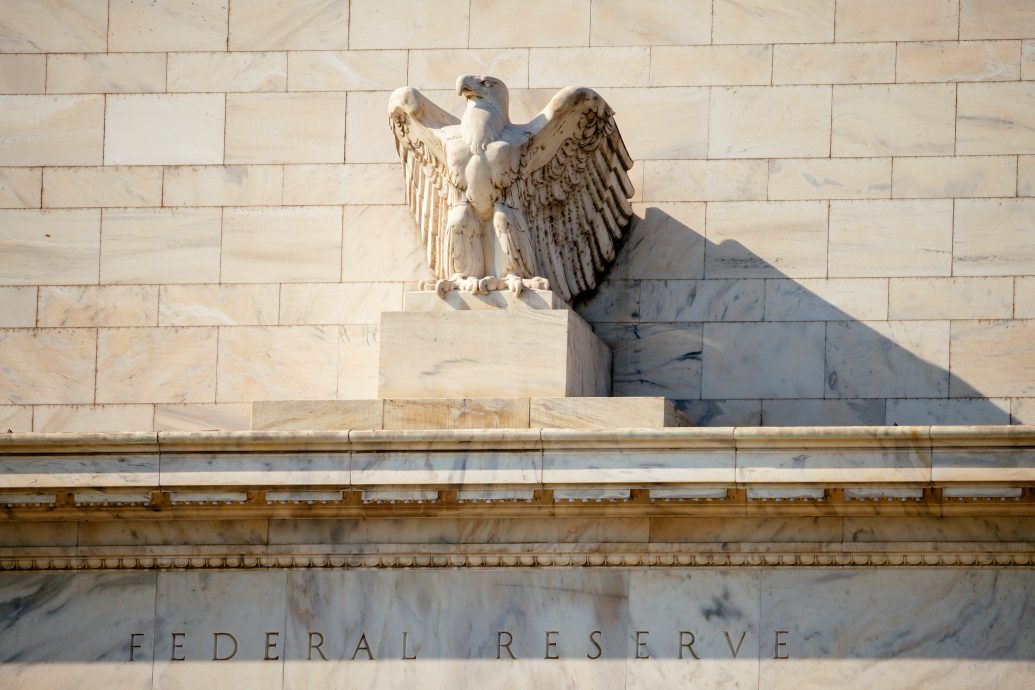Don't Fear the Fed
In the mid-1960s, Liberty Fund’s founder, Pierre Goodrich, decided to travel to Montauk, Long Island and rent an apartment overlooking the ocean. He arrived there with his wife and top personal assistant and spent a month reading Ludwig von Mises’ most important work, Human Action (1949). Such was Goodrich’s commitment to understanding the classics of liberty and such were his resources that he went to great lengths to read and contemplate one of the great works of 20th century Austrian economics.
Let’s suppose you are not a multimillionaire businessperson with the time and dedication to live by the ocean and read the great works of Mises and other Austrians. Fear not—John Tamny’s excellent, accessible, and surprisingly provocative Who Needs the Fed? will save you the cost of a beachfront rental on Long Island and give you a nice introduction to one of Mises’ other classic works, The Theory of Money and Credit.
First published in 1912, The Theory of Money and Credit is the keystone to understanding Austrian monetary and business cycle theory. For the Austrians, the individual is the proper unit of economic analysis. Mises approached money and credit the same way, and in so doing unlocked many core concepts that would undergird Austrian critiques of government intervention in fiscal and monetary matters. The work was written in German and published in Vienna, and Mises was little known at that time, particularly in the English-speaking world, where Keynesianism was dominant. Today interest in the Austrians continues to grow, and Tamny explains how they think about credit, money, and banking.
Tamny’s background as a popular writer and his deep understanding of the fundamental theories underlying markets and economics are evident throughout this book. He effectively employs analogies and contemporary examples that will inform a wide range of readers, young and old, from those knowledgeable about economics to complete novices. He lays out the basics of Austrian monetary and credit theory without using a single graph or equation. This is fitting, since the Austrians themselves were deeply skeptical about mathematical and formal methods in economics.
It’s true that the book’s ostensible subject is the Federal Reserve, but I read it as a broader challenge to both supporters and opponents of America’s central bank to get back to basics and think logically about the present and future state of our monetary circumstances. This is the kind of book that in many ways relies as much on logic as on economics. It takes on the Keynesians, as one would expect, but also certain contemporary Austrians who attribute to the Fed the power to create credit bubbles. Tamny is essentially trying to demystify America’s central bank but at the same time reveal it as neither as powerful as its enemies suggest nor as effective as its supporters contend.
The first of the book’s three parts is introductory, with credit being defined for the reader in straightforward language as “access to resources.” Tamny brings in an array of examples, from Hollywood, the music industry, college football, IT, and even the petroleum business, to show how credit is allocated in the real world. He also goes to great lengths to show that money is simply a medium of exchange and therefore different from credit. The credit needed to make a movie, frack for oil, or launch an IT start-up is given to those who are more credit-worthy (my language, not his) based on criteria that have nothing to do with Fed policy or modern monetary theory.
Using failed and successful college football coaches, Silicon Valley entrepreneurs, and Hollywood bigwigs to illustrate his point, Tamny makes a strong case that signals derived from market processes, while not perfect, are what determine credit allocation—not the whims of central bankers. It needs to be understood that credit is given based on past success and continued excellence. Those who repeatedly fail, says Tamny, see their access to credit cut off, and rightly so. He describes Brady Hoke’s firing as University of Michigan’s head football coach as simply the “closure of the credit door”—a healthy development because it provided the university with the means and the opportunity to get a better replacement. This stands in contrast to the Fed’s attempt to manipulate the allocation of credit based on academic theory and normative goals.
Whatever policies the Federal Reserve follows, neither it nor the government writ large can create credit, says Tamny; the Fed and the government can only destroy potential credit that is taken from citizens through taxation and other coercive action to fund these governmetnal activities. The activities of a bloated state divert valuable potential credit from the private sector.
The book’s two major complaints about the Fed are its misallocation of resources that could have been productive for the good of society, and that the Fed’s attempts to avoid natural economic processes have been impotent.
Its second section is about the banking system, and it is here where things get a bit more complicated and provocative. Tamny begins by showing, quite effectively, the errors in the Keynesian view that government “investing” can save a struggling economy. But having emphasized the role that private banking and savings play in maintaining a healthy economy, he surprisingly turns his attention to the flaws he sees in the Austrian critique of fractional banking. Using logical examples and quotations from Mises that endorse bank lending and borrowing, Tamny disputes Murray Rothbard’s claim that fractional reserve banking is akin to counterfeiting.
The point the author is trying to make here is critical. He is not endorsing central banking or government spending—he repeatedly shows how counterproductive and even destructive government spending is—but unlike some contemporary Austrians who look to fractional banking, fiat currencies, and central banking as the cause of many of the world’s economic ills, he simply sees the Fed and its fellow commercial banks as 1) misusing resources that the market could put to use more effectively; and 2) increasingly irrelevant in the modern economy.
For the purposes of this review, I’d like to concentrate on the second point and leave aside Tamny’s debate with the followers of Rothbard.
It’s really a point about decentralization. And it is illustrated with everyday anecdotes, such as Mr. and Mrs. Tamny and their daughter using Uber to get to a Taylor Swift concert. Uber, robots, companies providing consumers with direct credit, lending circles—all are discussed throughout as examples of the wide range of organizations that are effectively and privately improving the lives of consumers using decentralized and market-based criteria for their activities. In the case of banking, Tamny shows his readers convincingly that the Fed’s regulatory oversight over the banking sector does not prevent crises, is backward-looking, and has neutered the banking system to the point where smaller, more nimble and innovative alternatives have been able to serve consumers more effectively.
The author rightly notes that large banks typically make conservative and dull loans to established businesses, while the vast majority of us use alternative means—credit cards and other means—to fund our productive activities. He also predicts that, eventually, the cozy regulatory relationship between conventional banks and government will lead to the banks’ demise as major players in the U.S. economy.
But again, his arguments about the Fed’s relative impotence will draw the ire of more conventional Austrian economists. In discussing the late 2007 collapse of the U.S. housing finance sector, Tamny critiques Thomas Woods and other adherents of Austrian economic theory who blamed the Fed’s “loose” monetary policies for the housing bubble. He correctly describes housing as consumption, not production, but then, contrary to mainstream Austrian opinion, makes the argument that the Fed lacks the power to redirect the natural flow of credit in the real economy.
If, as he argues throughout the book, individuals increasingly don’t need conventional banking, move resources around in ways that are frequently at odds with Fed policy, and rely on market-based institutions for most of our goods and services, how could the Fed have the power to redirect credit to housing? Instead, he views the housing bubble as a creation of market forces rather than resulting from any loose monetary policy from the Federal Reserve.
Then he returns to a distinctly Austrian tone when he tells his readers that economic downturns and recessions, which the Fed strove to prevent in the run-up to the late 2007 crisis, are cleansing and necessary for a productive market system and that the Fed’s actions have prevented growth and the culling of unproductive institutions from the economy.
The final part of the book, which is about the Fed itself, is where Tamny makes the strongest economic and logical claims against the current central bank. He does a very nice job of explaining why Milton Friedman’s monetarism has proven to be inadequate in explaining and addressing the banking and financial crises that have hit the global economy in recent years.
However, he again rejects Austrian claims that the Fed’s Quantitative Easing created a credit bubble, writing instead that these actions were a significant misallocation from the healthy part of the economy that could have used the credit more fruitfully than the government did. He then debunks the Phillips Curve[1] in a manner that any Austrian (who is still reading and not outraged by his earlier tweaks against Rothbard) would wholeheartedly cheer, noting that greater employment does not cause inflation because inflation is the result of monetary instability, not rising wages.
Best of all, his discussion of inflation, and of the key advantages of having a money supply that focuses on stability of value, are easy to understand and intuitively appealing—particularly in light of the current slow rates of economic growth and low savings rates in the United States and elsewhere. Because the Fed has continually pursued highly unconventional policies in the wake of the Great Recession of 2007-2009, this part of the book provides a useful backdrop to discussions about current Fed policy.
Who Needs the Fed? is not perfect, but no book is. The author is unclear about whether or not a gold standard or free banking with private currencies would be a preferable alternative to the Fed. In his discussion of the American departure from the gold standard, he fails to address the problems that have historically occurred whenever government authorities have been given the responsibility of administering the gold standard. As Douglas Irwin of Dartmouth has powerfully argued, this was a prime driver of the Great Depression. His section on petroleum production and the price of oil very usefully includes a discussion of the role that dollar pricing has on a barrel of crude. But he dismisses the increase in production through technology gains in ways that seem extreme to this reader. Lastly, his insistence that the Fed’s QE program was not the result of printing money, but rather a transfer of resources from member banks, is not unanimously held by other economists.
In the end, this book’s message of real monetary reform is unique and appealing in a very potent way. Tamny sketches the basics of the Austrian school but, by focusing on the inefficiencies and wasteful allocation of resources that accompany government control over the money supply—rather than on the complexities of Austrian business cycle theory—he avoids having to explain the technical details of how monetary bubbles might occur through central bank manipulation of the money supply. His emphasis on innovation and growth should be appealing to readers with less experience in economics.
In an era when people are using banks and cash less and less, John Tamny should find a wide audience, with a book that will keep readers engaged and leave them well-informed.
[1] For an explanation of the Phillips Curve, which represents the relationship between the inflation rate and the unemployment rate, see Kevin D. Hoover’s entry in the Concise Encyclopedia of Economics that is available on the Econlib site, here.



